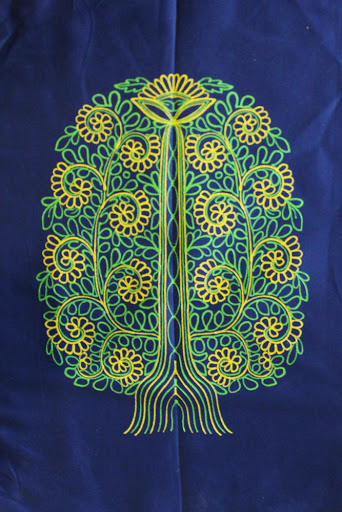Rogan Art: Gujarat | 09 Sep 2020
Why in News
The centuries old tradition of Rogan art (hand painting on cloth), is facing an unprecedented challenge due to pandemic.
Key Points
- About:
- The word Rogan means “Oil” in Persian. With origins in Persia, it came to Kutch around 300 years ago.
- This rare craft is practised by a lone Muslim family, the Khatris of Nirona Village, Gujarat.
- Technique:
- Rogan is a form of textile painting which uses a rich, brightly coloured paint made from castor oil and natural colors. Castor is a crop commonly grown in the Kutch region of Gujarat and the artists source it from the local farmers.
- Patterns:
- The intricate motifs – geometric flowers, peacocks, the tree of life, etc. – are drawn from the history and folk culture of the Kutch region.
- Process:
- The castor paste is mixed with natural colours and then is drawn out into a fine ‘thread’ with a metal stylus or ‘Kalam’. This metal rod never comes in contact with the fabric.
- The artisans then carefully twist the paint across the cloth into motifs and patterns.
- Next, the fabric is folded thereby printing its mirror image. The finer details are then added thus completing the Rogan painting.
- Recognition:
- The ‘Tree of Life’ design is the most famous design in Rogan painting. It is inspired by traditional Persian designs. The Prime Minister of India, Narendra Modi, gifted Rogan paintings to the USA president, Barack Obama, during his visit to the USA in 2014.
- The nine artists from the Khatri family have six national awards and six State awards between them.
- Other Important Painting Styles of India:
- Kangra Miniature Painting (Himachal Pradesh)
- Pattachitra Painting (Odisha)
- Thanjavur Painting (Tamil Nadu)
- Kishangarh school of Painting (Rajasthan): The well-known painting "Bani Thani" belongs to this style of painting.
- Kalamkari Painting (Andhra Pradesh)
- Madhubani Painting (Bihar)
- Warli Painting (Maharashtra)
